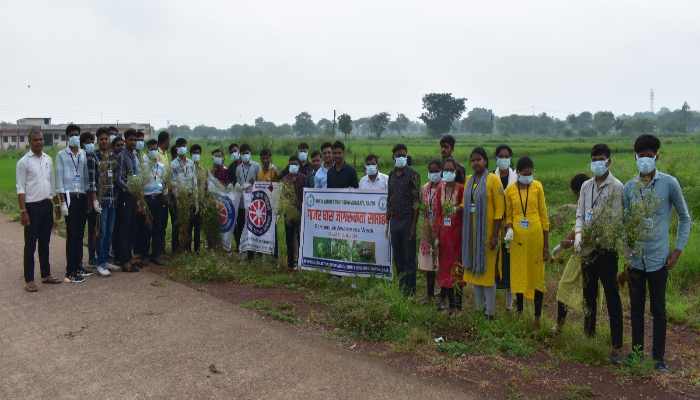
BEMETARA,CG: The Kumari Devi Choubey Agricultural College and Research Centre, Saja conducted ‘Carrot grass’ (Parthenium hysterophorus) eradication awareness campaign on Thursday at Saja in Bemetara district of Chhattisgarh.
Dean Dr. Alok Tiwari said carrot grass (Parthenium hysterophorus) is known by the names Congress grass, white cap gajri, Chatak Chandni and others. It is an exotic invasive weed. It was first seen in India in 1956 in Pune, Maharashtra. At present it has spread over about 35 million hectares of land in India. It is an annual herb whose height can range from about 1.5 meters to 20 meters. Its leaves look like carrot leaves. Each plant produces about 5,000 to 25,000 tiny seeds. In which, due to lack of dormancy, they germinate after getting moisture after falling in the ground. Carrot grass completes its life cycle in 3-4 months.
He said continuous contact of humans with this grass causes serious diseases like skin disease, fever, allergy, eczema and asthma. Consuming it by animals causes many types of diseases and reduces milk production. Besides, the students were made aware about integrated management. The weed can be controlled by uprooting it by hand before flowering, collecting it, burning it or making compost.
It was warned that uprooting carrot grass by hand, gloves should be worn, face masks should be worn and the entire body should be covered. To control carrot grass chemically, Metribuzin (0.3-0.5 percent), 24-D (1-1.5 percent) should be used in cultivated areas and Glyphosate (1-1.5 percent) in non-cultivated areas.
Dr. Kamalnarayan Koshale, assistant professor said through biological method, the natural enemy insect, Mexican beetle (Zygogramma bicolorata), can be controlled by releasing it in the infested areas and by using competing plants like ‘chakoda’, and ‘wild amaranth’.
© Bharatiya Digital News. All Rights Reserved. Developed by TechnoDeva